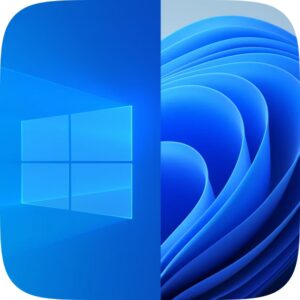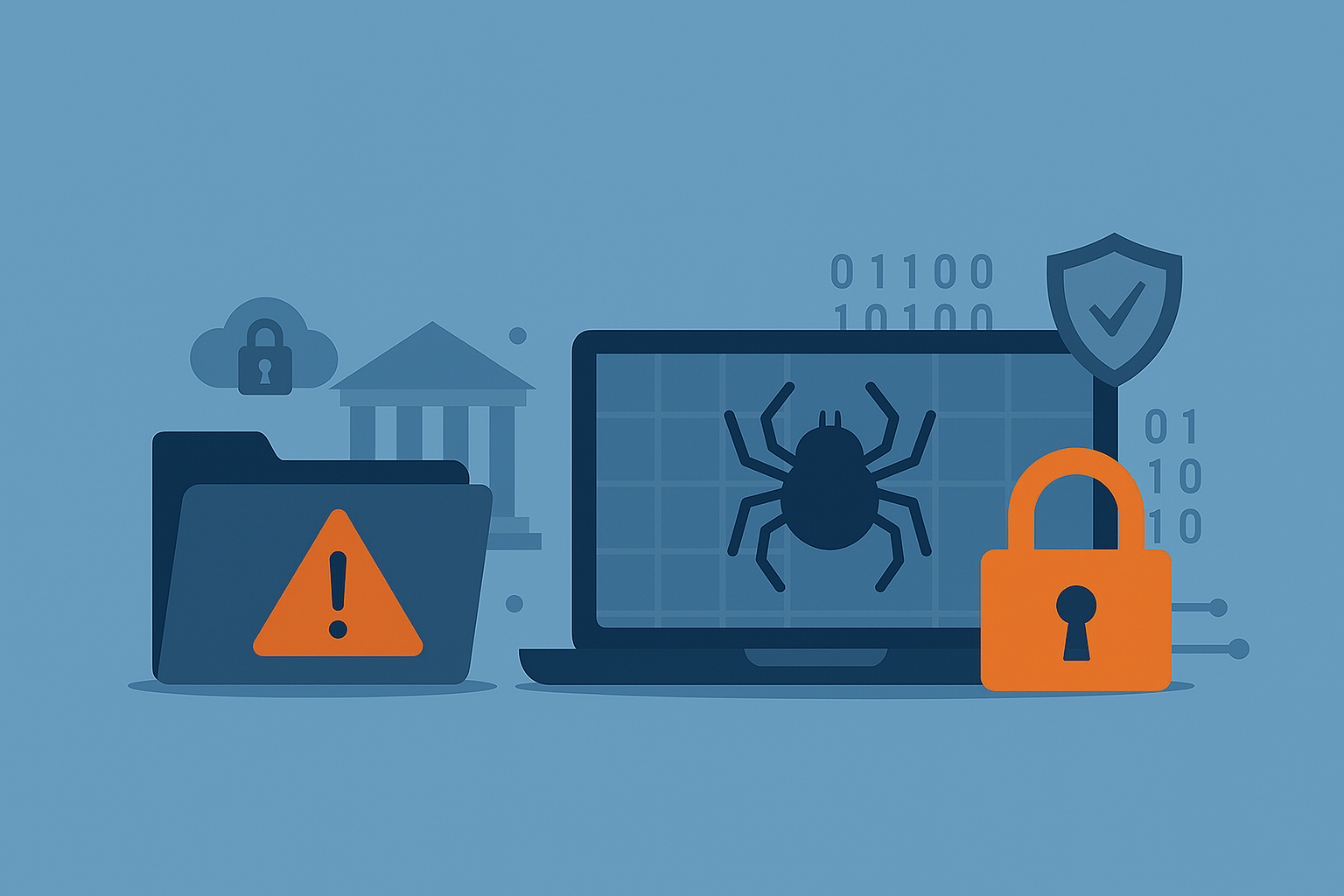Windows 10
End of Life
Windows 10 End of Life is near
Who this is for and what problem it solves
What Windows 10 End of Life actually means
When Microsoft ends support for Windows 10 on 14 October 2025, the following changes take effect:
- No more regular security updates for standard Windows 10 installations
- No new features or quality improvements
- Limited support options unless you join the paid Extended Security Updates program
- Growing compatibility issues as software vendors optimise for Windows 11 first
There is an Extended Security Updates option for businesses that need short term breathing space. Treat ESU as a bridge, not a destination. It will keep critical security fixes coming for a limited period, but it will not add features or modern protections found in Windows 11.


Why this matters to your business
Security exposure
Attackers target unsupported systems because new vulnerabilities will not be patched in the normal monthly cycle. Unsupported endpoints increase the likelihood of ransomware, data loss and costly downtime.
Compliance pressure
Frameworks like Cyber Essentials require supported, fully patched operating systems. Unsupported devices can jeopardise certification and may invalidate aspects of cyber insurance.
Productivity drag
Legacy machines struggle with modern applications, collaboration tools and security agents. Staff lose minutes daily to slow boot times, freezes and workarounds that chip away at morale.
Hidden costs
Older devices cost more to support, use more energy and fail more often. A planned refresh usually costs less over three to four years than sweating assets past end of life.
Your main options, explained in plain language
-
Upgrade in place to Windows 11
If a device meets Windows 11 requirements such as TPM 2.0 and Secure Boot, an in place upgrade can be quick and non disruptive. This works best for business grade laptops and desktops from the last three to four years, with SSD storage and 8 GB RAM or more. -
Refresh hardware to Windows 11 devices
If devices are older, do not meet requirements, or have reliability issues, replace them with Windows 11 Pro machines. You gain modern security, faster performance and longer life. A rolling refresh avoids a big bang and spreads cost in predictable tranches. -
Use Extended Security Updates as a temporary bridge
ESU can keep critical security patches flowing for a limited period after 14 October 2025. Use it to cover specialist devices, seasonal workloads or short projects while you complete your migration. Build the exit date into your plan on day one. -
Adopt virtual desktop or Cloud PC for special cases
For users tied to legacy apps or constrained by hardware, Windows 365 or Azure Virtual Desktop can remove the device dependency. Users connect to a secure cloud hosted Windows 11 desktop from almost any hardware. -
Combine approaches in a pragmatic roadmap
Most organisations mix these options. Upgrade what you can, refresh the rest, use ESU sparingly, and move edge cases to a cloud desktop. The goal is a clean, supportable and secure end state.
How to decide the right path in under two weeks
Step 1: Inventory every device
Export a device list from Intune, RMM or your asset register. Capture model, CPU, RAM, storage, purchase date, warranty, and encryption status.
Step 2: Check Windows 11 readiness
Run the Microsoft PC Health Check or Intune readiness reports. Flag blockers like missing TPM 2.0, incompatible CPUs or legacy boot settings.
Step 3: Segment by action
Group devices into Upgrade, Replace, Investigate. Use the age of hardware, warranty status, performance and business criticality to guide the decision.
Step 4: Map user impact
List high value users and roles who cannot afford disruption. Prioritise them for pilot and early migration with white glove support.
Step 5: Build a 90 day plan
Create waves that deliver measurable progress every two weeks. Lock a change freeze window for finance, payroll or peak sales periods.


Real world questions businesses ask
Do we have to replace every Windows 10 device on day one
No. Tackle it in waves. Upgrade compatible devices first, refresh ageing devices in steady tranches, use ESU only where necessary and time limited.
Can we keep a few Windows 10 machines offline
You can isolate lab or machine controller devices that cannot be upgraded. Place them on segmented networks, remove internet access, restrict admin rights and monitor closely. Document the exception with a risk owner and review date.
What if our line of business app is not ready for Windows 11
Use application compatibility testing early. If an app vendor needs more time, ring fence those users with ESU or use Windows 365 as a controlled workaround until the vendor certifies Windows 11.
How long does a migration take
Small businesses with fewer than 100 endpoints can complete in six to ten weeks. Larger estates can complete core users in one quarter and finish specialist areas in the next.
Will staff lose files or settings
With OneDrive Known Folder Move, Intune, and Autopilot, users keep files and settings. Pilot first, communicate clearly, and provide a simple guide for day one.
Technical checkpoints that reduce risk
- Firmware: Enable TPM 2.0 and Secure Boot in BIOS
- Storage: Standardise on SSD for fast boot and resilience
- Memory: Target 16 GB for knowledge workers, 8 GB minimum
- Security baseline: Defender for Endpoint, BitLocker, attack surface reduction rules
- Identity: Entra ID, conditional access and multifactor authentication
- Management: Intune device compliance, Windows Update for Business rings, Autopilot for zero touch provisioning
Budgeting that decision makers will support
- Total cost of ownership: Lower support tickets, fewer outages, higher staff satisfaction
- Energy efficiency: Modern CPUs and power profiles reduce energy costs over the device life
- Financing: Leasing or device as a service smooths cash flow and aligns with a four year lifecycle
- Residual value and recycling: Certified wiping and trade in recovers value and meets sustainability goals
What Should We Do Next?
- ✅ Take stock of every Windows 10 device
- ✅ Check Windows 11 readiness and segment devices
- ✅ Plan upgrades for compatible machines
- ✅ Schedule hardware refresh for the rest
- ✅ Use ESU only as a short term bridge
- ✅ Pilot with a small group, then roll out in waves
- ✅ Train users and provide clear day one guides
- ✅ Recycle old devices securely with certificates of destruction
How MirrorSphere delivers a smooth refresh
MirrorSphere helps organisations move from Windows 10 to Windows 11 with a plan that fits your business, not the other way round:
-
Discovery and risk workshop
We review your goals, compliance needs and key timelines, then produce a concise risk register and migration objectives. -
Asset and readiness report
You get a clear device inventory, Windows 11 compatibility status, and a prioritised action list by user and department. -
Pilot and proof of value
We migrate a representative group, validate performance and gather user feedback to refine the plan before scaling. -
Secure migration at scale
Using Intune, Autopilot and standardised build images, we deliver fast, predictable cutovers with minimal disruption. -
Training and first week support
Users get short guides, a simple checklist and rapid response support in the first week. -
Sustainable disposal
We handle data sanitisation and recycling with certificates of destruction to satisfy audit requirements.
Use cases where a hardware refresh pays back fast
- Finance teams with heavy spreadsheet use benefit from faster CPUs and SSDs that save minutes per workbook, every day
- Design and marketing teams gain with more RAM and modern GPUs that accelerate rendering and previews
- Field workers see longer battery life and sturdier chassis that cut device failures on the road
- Customer facing staff experience quicker boot and sign in, which improves service speed
A Practical 60-Day Timeline You Can Start Today
Week 1–2
Inventory, readiness checks, segmentation, executive sign off
Week 3–4
Pilot ten to twenty users, confirm build, test line of business apps
Week 5–6
Wave 1 rollout to core departments, gather feedback, fix minor issues
Week 7–8
Wave 2 rollout, decommission replaced devices, issue recycling certificates
Week 1–2
Inventory, readiness checks, segmentation, executive sign off
Week 3–4
Pilot ten to twenty users, confirm build, test line of business apps
Week 5–6
Wave 1 rollout to core departments, gather feedback, fix minor issues
Week 7–8
Wave 2 rollout, decommission replaced devices, issue recycling certificates
Quick checklist for Windows 10 End of Life
- Confirm end of support date and communicate it to staff
- Finalise the device list with age, warranty and readiness status
- Approve the upgrade or refresh plan with budget and timeline
- Schedule pilots and training
- Document exceptions with owners and review dates
- Track progress weekly and adjust waves as needed
Ready to plan your refresh?
If you have Windows 10 devices in production, now is the time to act.
Book a short Windows 10 End of Life assessment with MirrorSphere.
We will give you a clear device by device plan, a sensible timeline and a fixed cost proposal that removes uncertainty. Your team gets a faster, more secure platform. You get a calm, well managed transition that keeps the business moving.




